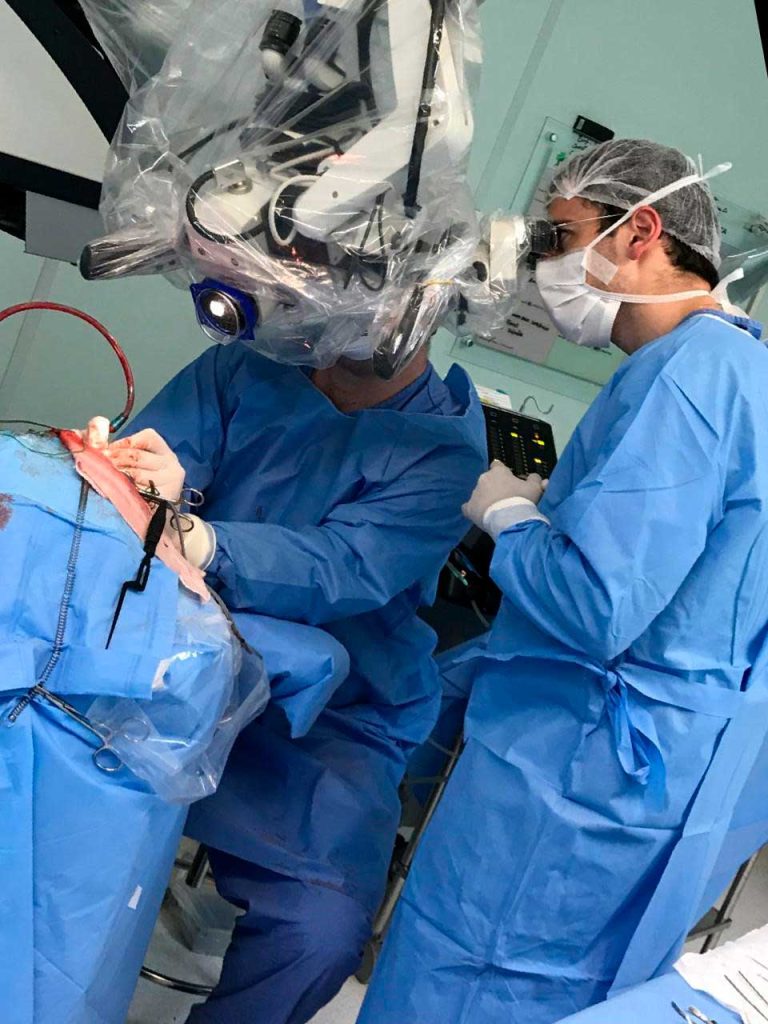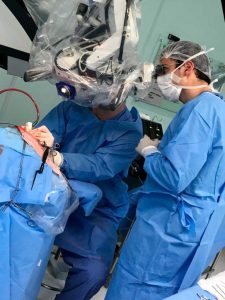
Surgical Procedures

Techniques used during hearing and facial nerve surgery; brain stem implantation; ultrasonic aspirators; and neuronavigation.
The translabyrinthine procedure begins with an incision behind the ear. The mastoid bone and inner ear are then removed to expose the tumor. Usually, the acoustic neuroma is completely removed, while partial removal is quite rare. This procedure is indicated for very small tumors and cases in which hearing on the side of the tumor is already compromised. Although the balance mechanism is removed from the affected ear, the remaining mechanism in the other ear compensates and provides stability for the patient 1 to 4 months after surgery.
The middle fossa procedure also begins with a small incision above the ear, and the membrane surrounding the brain is lifted to expose the acoustic neuroma. The tumor is then completely removed in most cases. This surgical technique helps to preserve hearing in the affected ear while also completely removing the acoustic neuroma. In approximately 40% of cases, the tumor involves the auditory nerve and the artery that supplies the inner ear, and its resection compromises hearing on this side.
The retrosigmoid procedure starts with a small incision behind the ear and the cerebellum is slightly retracted to expose the acoustic neuroma. Every effort is made to preserve hearing and facial nerve function while removing the tumor. Preservation of facial nerve function is typically successful with small and medium-sized tumors. With large tumors, sometimes a small fragment of the tumor is left attached to the facial nerve in order to avoid facial paralysis after surgery.

